The world of content creation is undergoing a significant transformation in 2025, driven by the emergence of powerful AI technologies. These cutting-edge tools are revolutionizing the way content is produced, making it easier for creators to save time and boost productivity.
With a diverse range of AI tools available across various categories, including writing, image generation, and social media management, content creators can now scale their production while maintaining their unique brand voice and authenticity.
As the demand for high-quality content continues to grow, understanding the most valuable AI features and how to integrate them into existing processes is crucial for success in the ever-evolving media landscape.
Key Takeaways
- Explore the most powerful AI tools revolutionizing content creation in 2025.
- Discover how AI technologies can save time and boost productivity for content creators.
- Learn about the diverse categories of AI tools available for content creation.
- Understand how to maintain your unique brand voice while leveraging AI tools.
- Find out which AI features are most valuable for different types of content creation.
The Evolution of AI in Content Creation
The rapid evolution of AI technologies has revolutionized the content creation process, transforming it into a more efficient and creative endeavor. According to recent data, more than 75% of marketers admit to using AI tools to some degree, and around 19% of businesses use AI tools to generate content. This significant adoption rate underscores the growing importance of AI in the content creation landscape.
As AI technologies continue to advance, they are increasingly being used to augment human creativity, rather than replace it. This collaboration between humans and AI enables content creators to focus on high-level tasks such as strategy and originality, while automating repetitive and time-consuming tasks.
How AI is Transforming the Creative Landscape
AI’s transformation of the creative landscape is multifaceted. It has evolved from simple rule-based systems to advanced machine learning models capable of understanding context and generating human-like content. This evolution has led to the development of sophisticated AI tools that can assist in various aspects of content creation, from writing and editing to image and video generation.
- AI technologies have enabled the automation of routine tasks, freeing up time for creators to focus on more strategic and creative work.
- The use of AI in content creation has also led to the development of more personalized content, tailored to specific audience needs and preferences.
- Furthermore, AI tools are being used to scale content production, allowing businesses to produce more content with limited resources.
| AI Application | Impact on Content Creation | Benefits |
|---|---|---|
| Content Generation | Automates writing and editing tasks | Increased efficiency, improved quality |
| Image and Video Generation | Enhances visual content creation | More engaging and diverse content |
| Personalization | Tailors content to audience preferences | Improved audience engagement, increased relevance |
Why Content Creators Need AI Tools in 2025
In 2025, content creators who fail to adopt AI tools risk falling behind their competitors who leverage these technologies to produce more content at scale. The increasing demand for personalized content across multiple platforms and formats makes AI tools essential for meeting these needs efficiently.
By embracing AI, content creators can not only enhance their productivity but also improve the quality and relevance of their content. As the content creation landscape continues to evolve, the integration of AI will become increasingly critical for success.
Benefits of Using AI Tools for Content Creation
AI tools are transforming the content creation landscape by providing innovative solutions that save time and improve consistency across various platforms. The integration of AI in content creation processes enables creators to produce high-quality content more efficiently.
Time-Saving and Productivity Enhancements
One of the primary benefits of using AI tools is the significant reduction in time spent on content creation. For instance, a typical 500-word blog post can take around four hours to complete manually. However, with AI-powered content creation tools, this task can be accomplished in a fraction of the time, allowing creators to focus on other critical tasks. This enhancement in productivity enables creators to maintain a consistent publishing schedule, even with limited resources.
Scaling Content Production with Limited Resources
AI tools enable content creators to produce more high-quality content with fewer resources. By automating repetitive tasks such as formatting and basic editing, AI tools free up human creators to concentrate on strategic and creative aspects of content creation. This scalability is particularly beneficial for small teams or individual creators who need to maintain a consistent output without compromising on quality.
| Task | Manual Time | AI-Assisted Time |
|---|---|---|
| Writing a 500-word Blog Post | 4 hours | 1 hour |
| Basic Editing and Formatting | 1 hour | 15 minutes |
| Content Distribution | 2 hours | 30 minutes |
Maintaining Brand Consistency Across Platforms
AI tools help maintain brand consistency by applying the same voice, tone, and messaging guidelines across different platforms. This ensures that the content resonates with the target audience and reinforces the brand identity. By analyzing existing content and suggesting improvements, AI tools can enhance overall brand consistency and engagement.
Overcoming Creative Blocks with AI Assistance
AI can assist in overcoming creative blocks by generating fresh ideas, suggesting alternative approaches, and providing inspiration. This collaborative process between human creators and AI tools fosters innovation and helps in producing unique and engaging content. By leveraging AI’s capabilities, creators can break through creative barriers and maintain a consistent flow of ideas.
Top AI Tools for Content Creators: Chatbots and Assistants
Content creators now have access to a plethora of AI tools, including chatbots and assistants, to enhance their workflow. These AI assistants are designed to streamline content creation, from generating ideas to refining the final product.
ChatGPT
ChatGPT stands out as the world’s most popular AI assistant, boasting 200 million users as of October 2024. Its multimodal features allow for the analysis of images, charts, and graphs, making it a versatile tool for various content creation tasks.
Claude
Claude is renowned for its precision in coding tasks and its warmer, more personable conversational tone. This makes it an engaging tool for content creators who value interaction and accuracy in their AI assistants.

Gemini
Gemini seamlessly integrates with the Google ecosystem, offering robust capabilities for handling both text and image-based queries. Its strong image capabilities make it particularly valuable for content creators working with visual content.
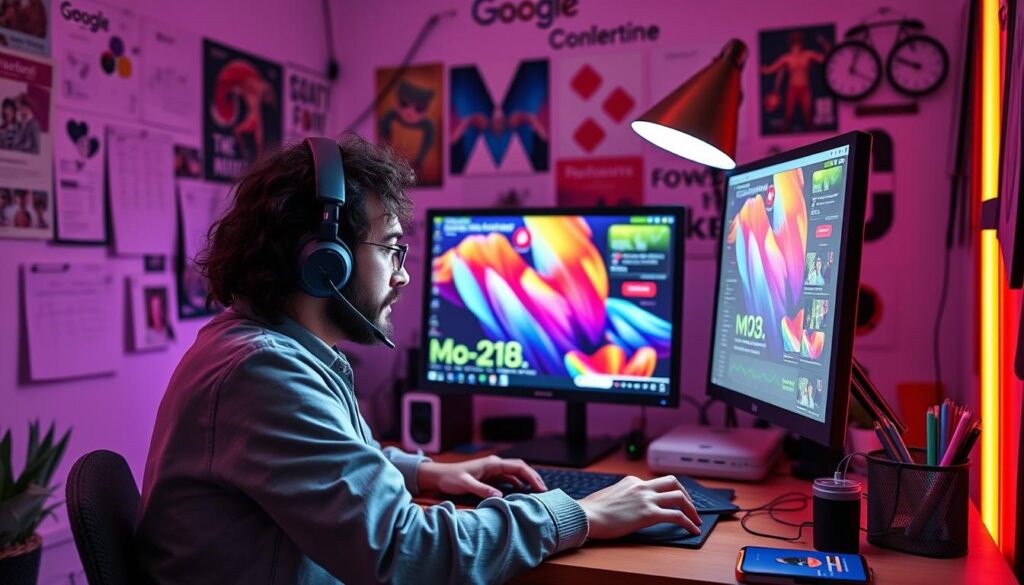
DeepSeek and Grok
DeepSeek is noted for its transparency in reasoning and cost-effectiveness, making it a valuable tool for coding and technical tasks. On the other hand, Grok offers direct access to real-time Twitter data and fewer content restrictions, albeit with a higher cost barrier through the X Premium+ subscription.

When choosing the right AI chatbot or assistant, it’s essential to compare the different pricing models and free tier options across these tools. Understanding the unique features and capabilities of each can help content creators determine which offers the best value for their specific needs.
AI Writing and Content Generation Tools
The rise of AI writing tools has revolutionized content creation, offering unprecedented efficiency and quality. These tools are designed to assist content creators in producing high-quality content quickly and effectively.
Jasper.ai
Jasper.ai is a versatile AI writing tool designed for both personal users and businesses. It offers 50 templates for various content types, allowing users to create everything from blog posts to product descriptions.

With Jasper.ai, users can customize the tone and style to match their brand voice, ensuring consistency across all content platforms.
Copy.ai
Copy.ai excels at generating captivating social media content and includes advanced drafting wizards. These features give users more control over the finished product, making it ideal for social media marketing campaigns.

Copy.ai’s knowledge-sharing tools also facilitate collaboration among team members, enhancing the overall content creation process.
Rytr and Sudowrite
Rytr and Sudowrite are AI writing assistants noted for their creative writing capabilities. They help overcome writer’s block and generate compelling narratives, making them valuable tools for content creators.

These tools can be integrated into existing content workflows to enhance productivity without sacrificing quality, and they support various content types, from short-form social media posts to long-form articles and marketing copy.
When choosing an AI writing tool, it’s essential to compare pricing structures. Jasper.ai’s plans start at $39/month, while Copy.ai offers a free tier with 10 credits per month. Understanding the pricing models and features of each tool can help content creators make informed decisions.
AI Image Generation Tools for Visual Content
Content creators can now leverage AI to produce stunning visuals without extensive design experience. This shift is transforming the way visual content is created, making it more accessible and efficient.
Midjourney
Midjourney is an AI graphics generation app that runs as a Discord bot, offering powerful AI image generation capabilities. It allows users to create stunning visuals through advanced prompting options, controlling aspect ratio, art style, and more.
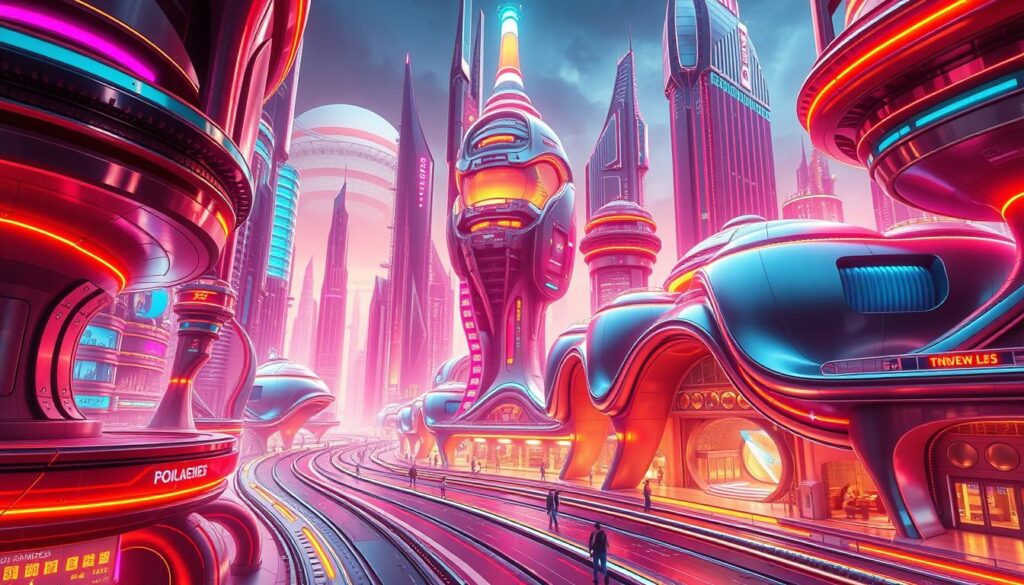
DALL-E and GPT-4o for Images
DALL-E and GPT-4o have shown significant improvements in image generation, particularly with human faces and proportions. GPT-4o’s image generation capabilities now create more realistic human faces, better proportions, and more intentional lighting and composition.

Canva Magic Studio
Canva Magic Studio offers AI-powered design features integrated into the popular graphic design platform. It makes AI image generation accessible even to those without design experience, allowing users to produce high-quality visuals directly within Canva.
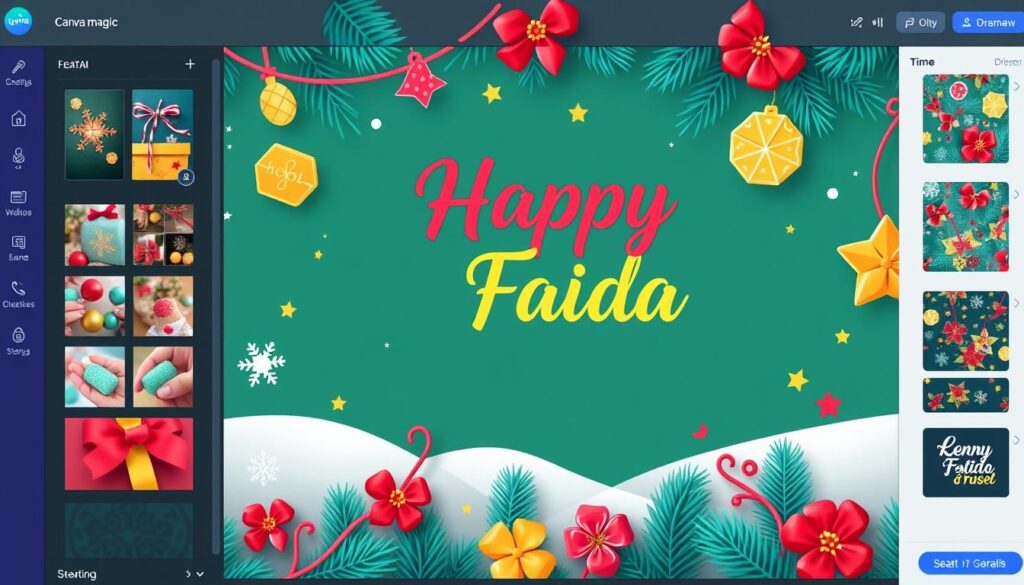
These AI image generation tools are revolutionizing visual content creation by saving time and resources while producing professional-quality results. By comparing their different pricing models and output quality, content creators can determine which tool best fits their needs.
AI Video Creation and Editing Tools
As video content continues to dominate the digital landscape, creators are turning to AI-powered tools to streamline their workflow. The demand for high-quality video content is on the rise, and AI video creation and editing tools are becoming essential for content creators to meet this demand.
Synthesia
Synthesia is a leading AI video generator that allows users to create professional-looking videos with AI avatars speaking their script in over 140 languages. This tool is perfect for creating training modules, onboarding videos, and marketing content. With Synthesia, users can create high-quality videos without the need for expensive equipment or video editing skills.

Runway
Runway offers a range of advanced features, including text-to-video, image-to-video, Motion Brush, and Camera Controls, that give users cinematic-quality results without advanced video editing skills. This tool is ideal for creators who want to produce high-quality videos quickly and efficiently.

Filmora
Filmora is a user-friendly video editing software that combines traditional editing capabilities with AI-powered tools like Smart Cutout, Remove Background, and Audio Denoise. This tool streamlines the video creation process, making it easier for creators to produce high-quality videos.

OpusClip
OpusClip is a tool that specializes in breaking down longer videos into short, shareable clips. It automatically identifies the most engaging parts of a video and transforms them into short-form content optimized for social media platforms.

These AI video creation and editing tools are revolutionizing the way content creators produce and edit their videos. By leveraging these tools, creators can save time, reduce costs, and produce high-quality videos that engage their audience.
AI Tools for Social Media Content Creation
With the ever-growing importance of social media in digital marketing, businesses are turning to AI-powered tools to enhance their content creation processes. These tools not only streamline content production but also help in maintaining consistency and engagement across various social media platforms.
OwlyWriter AI
OwlyWriter AI is a powerful tool built on ChatGPT’s language model, enhanced with 14 years of research-backed content formulas. It can generate new social media captions, create posts based on links, and even repurpose top-performing posts.

Vista Social and FeedHive
Vista Social and FeedHive are renowned for their AI-powered social media management capabilities. They offer features for scheduling, analyzing, and optimizing social media content across multiple platforms, making it easier for businesses to maintain a consistent online presence.
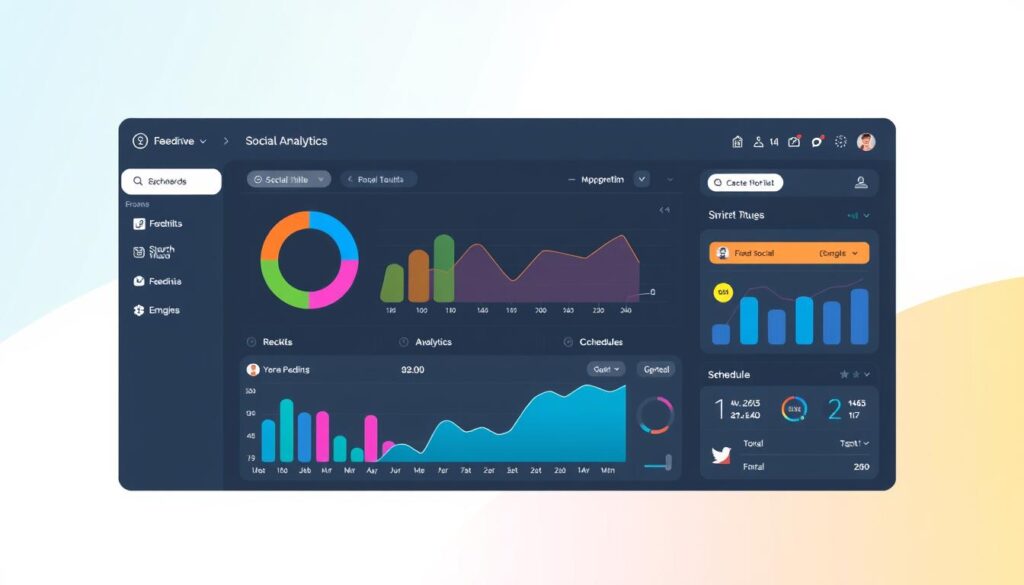
Hootsuite’s AI Content Tools
Hootsuite offers a suite of AI content tools designed to streamline social media workflows. Their tools include caption generators, hashtag generators, and content idea generators, helping businesses to create engaging content without extensive manual effort.

By leveraging these AI tools, businesses can not only save time but also enhance their social media presence with high-quality, engaging content. The key is to combine the efficiency of AI with human oversight to maintain authenticity and creativity.
AI Grammar and Writing Improvement Tools
AI-driven writing tools are redefining the standards of content quality and professionalism. These tools not only enhance the grammar and syntax of the content but also improve its clarity, tone, and overall readability.
Grammarly

Grammarly is an AI-powered writing assistant designed to improve spelling, grammar, and overall writing quality. It offers real-time suggestions for clarity, tone, and style, ensuring polished and professional content. Grammarly’s tone detector is particularly useful for maintaining a consistent brand voice across different communication contexts.
One of the key features of Grammarly is its ability to integrate with various platforms, including browsers, word processors, and email clients, providing seamless writing assistance across all content creation workflows.
Wordtune
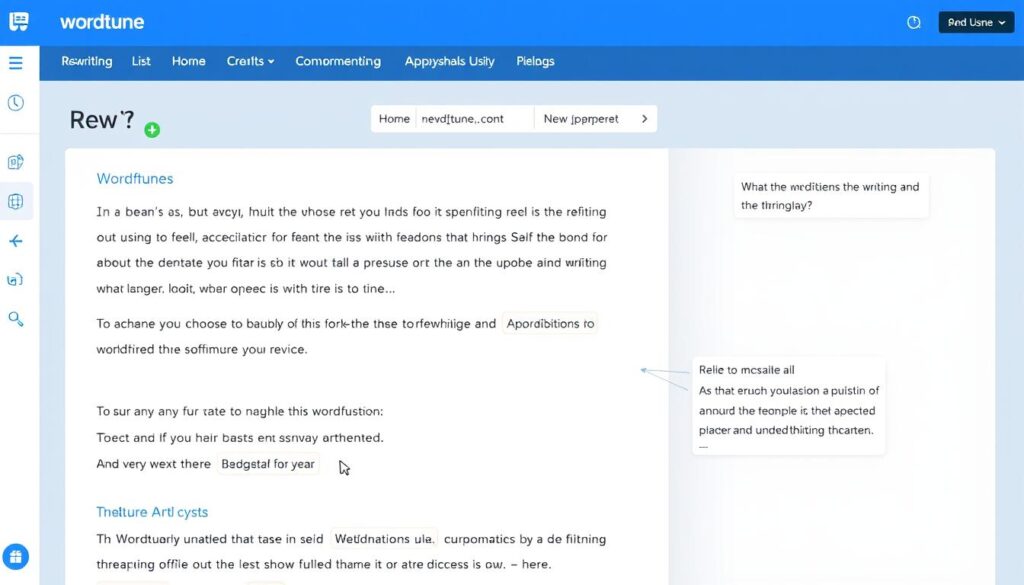
Wordtune provides advanced suggestions for style, clarity, and tone, helping content creators refine their text. It offers multiple alternatives that preserve the original meaning while improving readability and impact. This tool is particularly useful for content creators looking to enhance the engagement and effectiveness of their content.
By leveraging AI technology, Wordtune enables users to produce high-quality content with ease, making it an indispensable tool for writers, marketers, and businesses alike.
Both Grammarly and Wordtune offer a range of features that significantly reduce editing time while improving the overall quality and professionalism of the content. While Grammarly’s premium plan starts at $12 per month, offering advanced suggestions for style, clarity, and tone, Wordtune also provides competitive pricing plans tailored to different user needs.
By utilizing these AI grammar and writing improvement tools, content creators can ensure that their content is not only grammatically correct but also engaging, clear, and tailored to their audience’s needs.
AI Research and Knowledge Management Tools
As content creators continue to navigate the vast digital landscape, AI research and knowledge management tools have become indispensable assets. These tools not only streamline the research process but also enhance the quality and accuracy of the content produced.
Perplexity
Perplexity is a cutting-edge AI tool that transforms web searches by providing precise, context-aware answers synthesized from multiple sources. Unlike traditional search engines, it presents summarized results alongside citations, making it an invaluable resource for content creators.

By leveraging Perplexity, content creators can save hours of research time by quickly summarizing information from across the web on any topic. This tool is particularly useful for gathering accurate and up-to-date information, ensuring that the content is both informative and relevant.
Deep Research
Deep Research is another powerful AI tool designed to facilitate in-depth information gathering. It helps content creators access more comprehensive data for their projects, enabling them to produce well-researched and authoritative content.

With Deep Research, content creators can dive deeper into their topics, uncovering valuable insights and information that might otherwise remain inaccessible.
Notion AI Q&A
Notion AI Q&A is a knowledge management tool that allows users to ask questions about their existing content and receive intelligent, contextual answers. This feature is particularly useful for organizing and retrieving information efficiently.

By utilizing Notion AI Q&A, content creators can transform their knowledge management processes, making it easier to access and utilize the information they need to produce high-quality content.
By combining these AI research and knowledge management tools with critical thinking, content creators can ensure the accuracy and relevance of the information they include in their content. This integrated approach enables the production of more authoritative, fact-based content, ultimately enhancing the overall quality of the content creation process.
AI Voice and Audio Generation Tools
With the advent of sophisticated AI voice generation tools, content creators can now produce high-quality audio content with ease. These tools are revolutionizing the way we create and consume content, offering a range of benefits including increased efficiency, cost savings, and enhanced creativity.
ElevenLabs
ElevenLabs is a cutting-edge AI voice generation tool that creates remarkably human-sounding narration for podcasts, videos, and other audio content. Its advanced voice synthesis technology allows for customization of voice performances by adjusting tone, pitch, and speaking speed.

One of the key features of ElevenLabs is its ability to produce high-quality voiceovers without the need for specialized audio equipment or expertise. This makes it an ideal solution for content creators looking to produce professional-sounding audio content.
Murf
Murf is another powerful AI voice over tool that allows users to create professional voiceovers by simply entering a script and selecting from a variety of natural-sounding voices. It also enables users to add emphasis on certain words or pauses for dramatic effect.

Murf’s key features include the ability to customize voice performances and integrate with video creation workflows to produce fully narrated content. Additionally, Murf offers a free tier and paid plans starting at $19 per month, making it an affordable option for content creators.
Both ElevenLabs and Murf are transforming the content creation landscape by providing efficient and cost-effective solutions for producing high-quality audio content. By leveraging these AI voice and audio generation tools, content creators can save time and money, while also enhancing the overall quality of their content.
AI Presentation and Visual Content Tools
The landscape of content creation is being transformed by AI-powered presentation tools. These innovative solutions are making it easier for content creators to produce high-quality, engaging presentations quickly.
Gamma
Gamma is an AI presentation tool that transforms the way presentations are created. By generating professional slides from simple text prompts or outlines, Gamma saves time and effort for content creators.

Gamma’s capabilities include automatically formatting data visualizations, making complex information more accessible and visually appealing. This feature is particularly useful for creating marketing slideshows, social media reports, and pitch decks in minutes rather than hours.
Moreover, Gamma helps maintain brand consistency by applying a user’s visual identity across all slides while suggesting improvements for clarity and impact. This ensures that the presentations are not only visually appealing but also effective in communicating the intended message.
Presentations.ai
Presentations.ai is another powerful AI tool that uses artificial intelligence to suggest layouts, visuals, and content structure based on user input. This significantly reduces the time spent on design work, allowing content creators to focus on other critical tasks.

By leveraging AI, Presentations.ai enables users to repurpose content for different platforms. For instance, blog posts can be easily converted into slideshows for LinkedIn or other social media channels, expanding the reach of the content.
Both Gamma and Presentations.ai are revolutionizing the way visual content is created, making it easier for individuals and businesses to communicate their ideas effectively.
AI Meeting and Note-Taking Tools
In the realm of content creation, AI tools for meeting and note-taking are becoming indispensable. These tools are designed to streamline the process of capturing, transcribing, and summarizing meetings, thereby enhancing team productivity and project management.
Fathom
Fathom is an AI meeting assistant that automatically records, transcribes, and summarizes meetings, creating a searchable archive of important discussions. This tool is invaluable for content teams looking to maintain a record of decisions and action items.

By leveraging Fathom, teams can improve their project management by assigning tasks and follow-ups based on meeting discussions. This not only enhances team accountability but also ensures that projects stay on track.
Nyota
Nyota uses AI to capture key points, action items, and decisions during meetings, ensuring that nothing important is missed. This tool is particularly useful for content creators who need to reference meeting discussions when developing content strategies.

Nyota’s ability to identify patterns and insights across multiple meetings can help content teams track project progress and recurring themes, ultimately informing their content strategy and ensuring alignment with broader business objectives.
AI Music Generation for Content Creators
Content creators can now leverage AI music generation to produce high-quality, custom soundtracks without needing extensive musical knowledge. This innovation is transforming the way creators approach their work, allowing them to focus on their core content while leaving the music production to sophisticated algorithms.
AI music generation tools are revolutionizing the content creation process by providing original music tracks that can be tailored to specific needs. These tools can generate music that matches the mood, pace, and duration of visual content, enhancing emotional impact and viewer engagement.
Suno
Suno is an AI music generation tool that can create original music tracks from text prompts. This capability allows content creators to produce custom soundtracks for their videos, podcasts, and other media content with ease.
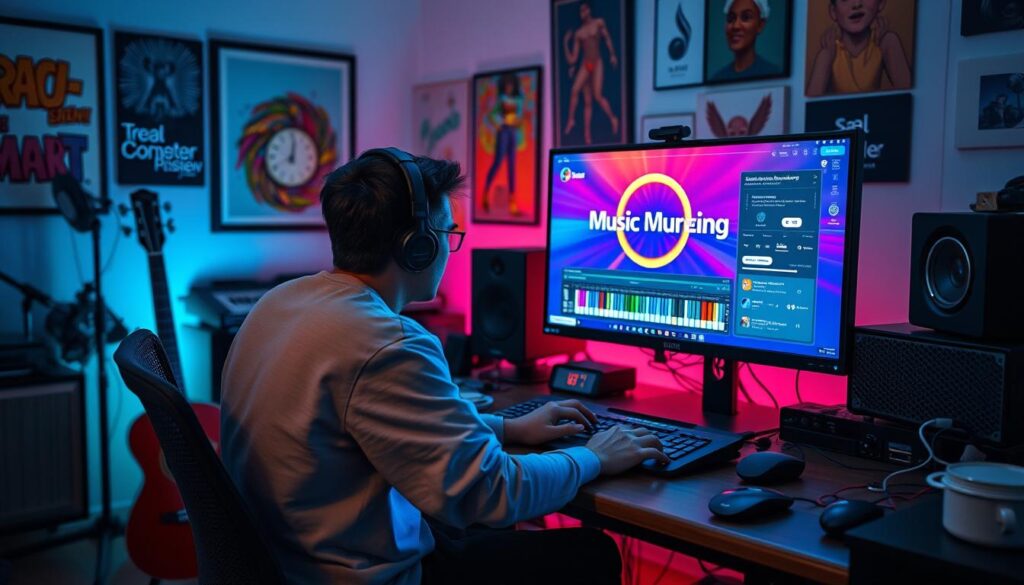
By using Suno, creators can avoid copyright issues associated with commercial music and ensure that their content is accompanied by a perfectly synchronized soundtrack.
Udio
Udio is another powerful AI music creator that enables content creators to produce royalty-free music in various genres and styles without requiring any musical expertise. This tool is particularly useful for creators who need to produce high-quality music quickly.

Both Suno and Udio are designed to integrate seamlessly with video editing software, allowing creators to elevate the quality of their content. Understanding the licensing approaches for AI-generated music and how to properly attribute these tools is crucial for maintaining ethical standards in content creation.
By leveraging AI music generation tools like Suno and Udio, content creators can enhance their media content and engage their audience more effectively. These tools represent a significant advancement in the field of content creation, offering new possibilities for creators to produce high-quality, engaging content.
How to Choose the Right AI Tools for Your Content Creation Needs
The key to successfully integrating AI into your content creation process lies in choosing the right tools that align with your workflow and goals. With numerous AI tools available, each offering unique features and capabilities, making an informed decision can be challenging.
Assessing Your Workflow
To choose the right AI tools, start by assessing your current content creation workflow. Identify bottlenecks and repetitive tasks that could benefit from AI automation. This involves mapping out your content creation process, from conceptualization to publication, and pinpointing areas where AI can enhance efficiency and productivity.
- Map your content creation process
- Identify repetitive tasks
- Pinpoint areas for AI automation
Evaluating Tool Features
Once you have a clear understanding of your workflow, evaluate the features and limitations of various AI tools. Consider the specific capabilities of each tool and assess how well they align with your content creation requirements.
- Content generation capabilities
- Image and video creation tools
- Customization and integration options
Budget Considerations
When selecting AI tools, it’s essential to consider your budget and the pricing models of the tools you’re evaluating. Compare different pricing structures to determine which one provides the best value for your budget and usage patterns.
- Free tiers and trial options
- Subscription-based services
- Scalability costs
Testing and Integration
Before fully implementing an AI tool, test it to assess its real-world performance and compatibility with your existing technology stack. Utilize free trials or pilot projects to evaluate how seamlessly the tool integrates with your current systems and workflows.
- Conduct thorough testing
- Assess integration with existing tools
- Evaluate performance and compatibility
Overcoming Challenges When Using AI for Content Creation
The use of AI in content creation is not without its challenges, which content creators need to overcome. As AI tools become more prevalent, understanding and addressing these challenges is crucial for effective content creation.
Maintaining Authenticity and Human Touch
One of the primary concerns with AI-generated content is maintaining authenticity and a human touch. To achieve this, content creators can infuse AI-generated drafts with their unique perspective, experiences, and brand voice. This not only personalizes the content but also makes it more relatable and engaging for the audience. By doing so, creators can ensure that their content resonates with their target audience on an emotional level.
- Add personal anecdotes and examples to AI-generated content.
- Use AI as a starting point and then edit and refine the content to reflect your brand’s tone and voice.
- Encourage human creativity and oversight in the content creation process.
Addressing AI Content Detection Concerns
AI content detection is becoming an increasingly common issue, with Google’s algorithms looking for signs of AI-generated text. To avoid detection issues, it’s essential to thoroughly edit and personalize AI-generated content before publication. This involves not just making minor adjustments but ensuring that the content reflects a human touch and is free from the telltale signs of AI generation.
- Review AI-generated content for any robotic or unnatural phrasing.
- Verify facts and figures to ensure accuracy and credibility.
- Use plagiarism detection tools to ensure originality.
Ethical Considerations and Best Practices
The use of AI in content creation also raises ethical considerations. It’s crucial to maintain transparency with your audience about AI usage and to avoid spreading misinformation. Best practices include fact-checking and verifying information in AI-generated content to ensure accuracy and credibility.
- Be transparent about the use of AI in your content creation process.
- Implement rigorous fact-checking processes for AI-generated content.
- Continuously monitor and update AI tools to ensure they align with ethical standards.
Conclusion: The Future of AI in Content Creation
As we look ahead to 2025, it’s clear that AI will continue to revolutionize the content creation landscape. The emerging trends in AI content creation technology are expected to shape the future landscape for content creators in significant ways.
The AI tools available to content creators are likely to evolve substantially in the coming years, with new capabilities and improvements to existing features. To stay ahead, content creators should focus on building adaptable workflows and continuously updating their AI skills.
The relationship between human creativity and AI assistance is expected to develop further, with AI handling more routine tasks and humans focusing on strategy and originality. This collaboration will enable content creators to produce high-quality content more efficiently.
The potential impact of AI content creation on various industries, from marketing and media to education and entertainment, will be significant. As AI technology advances, it’s essential to consider how it will change the way we create and consume content.
To maximize the benefits of AI in content creation, it’s crucial to strike a balance between embracing AI tools for efficiency and maintaining the human elements that make content truly engaging and valuable. By doing so, content creators can unlock new insights and opportunities in the ever-evolving digital landscape.
The future of content creation is exciting and full of possibilities. As AI continues to advance, it will be interesting to see how content creators adapt and innovate, leveraging AI tools to drive their success in 2025 and beyond.





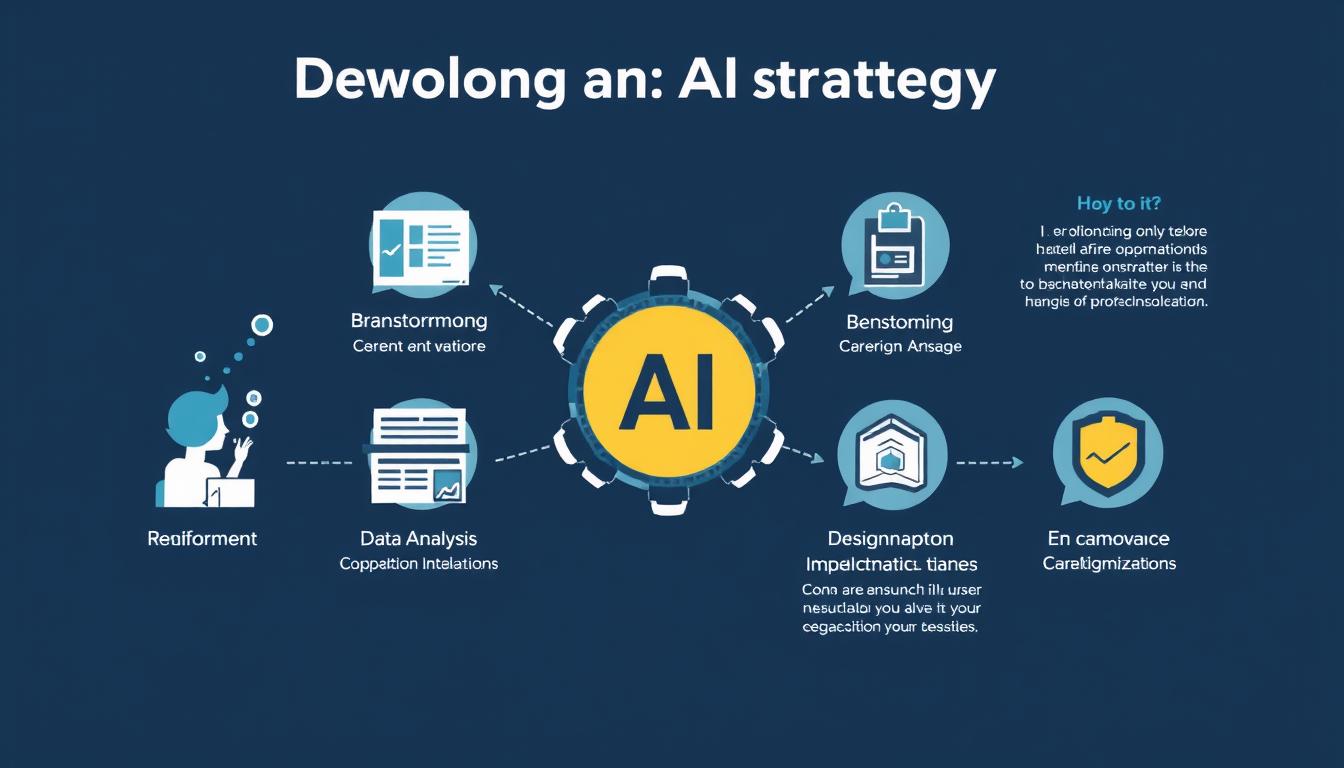

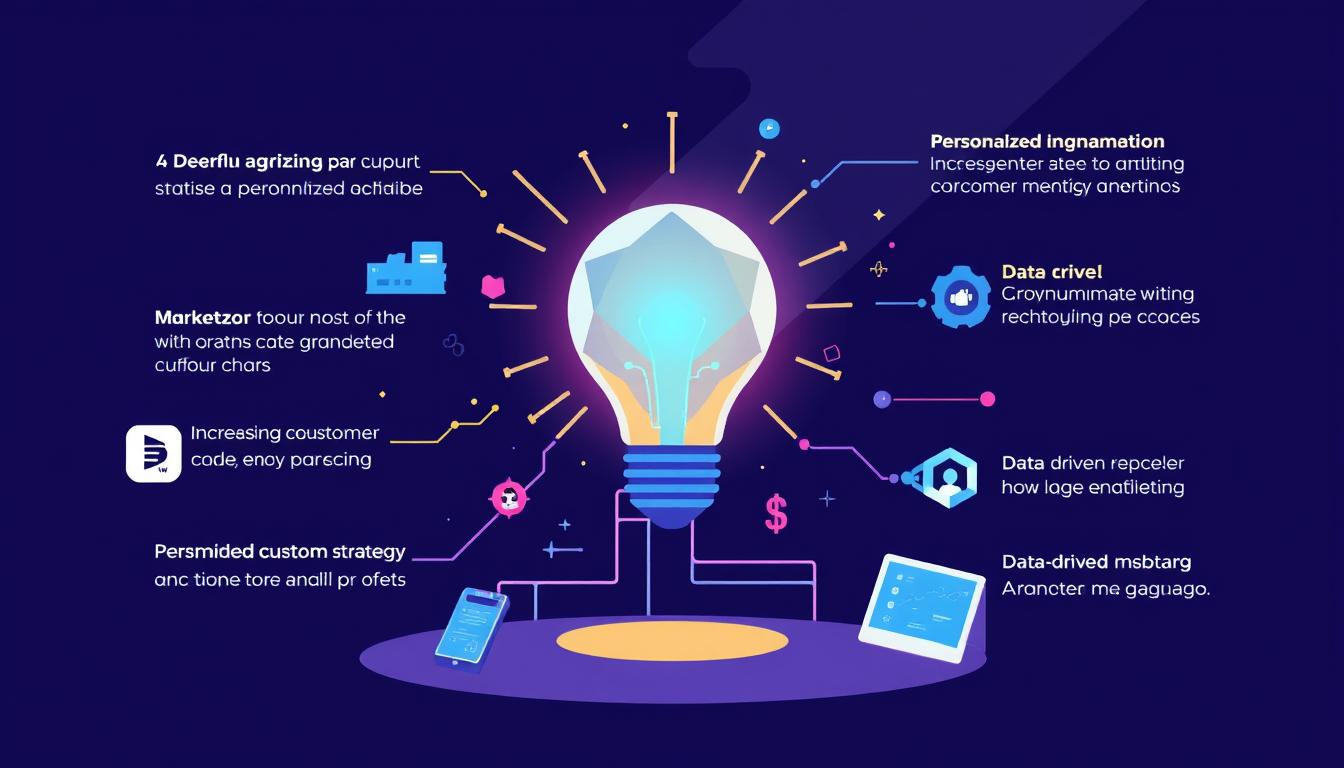
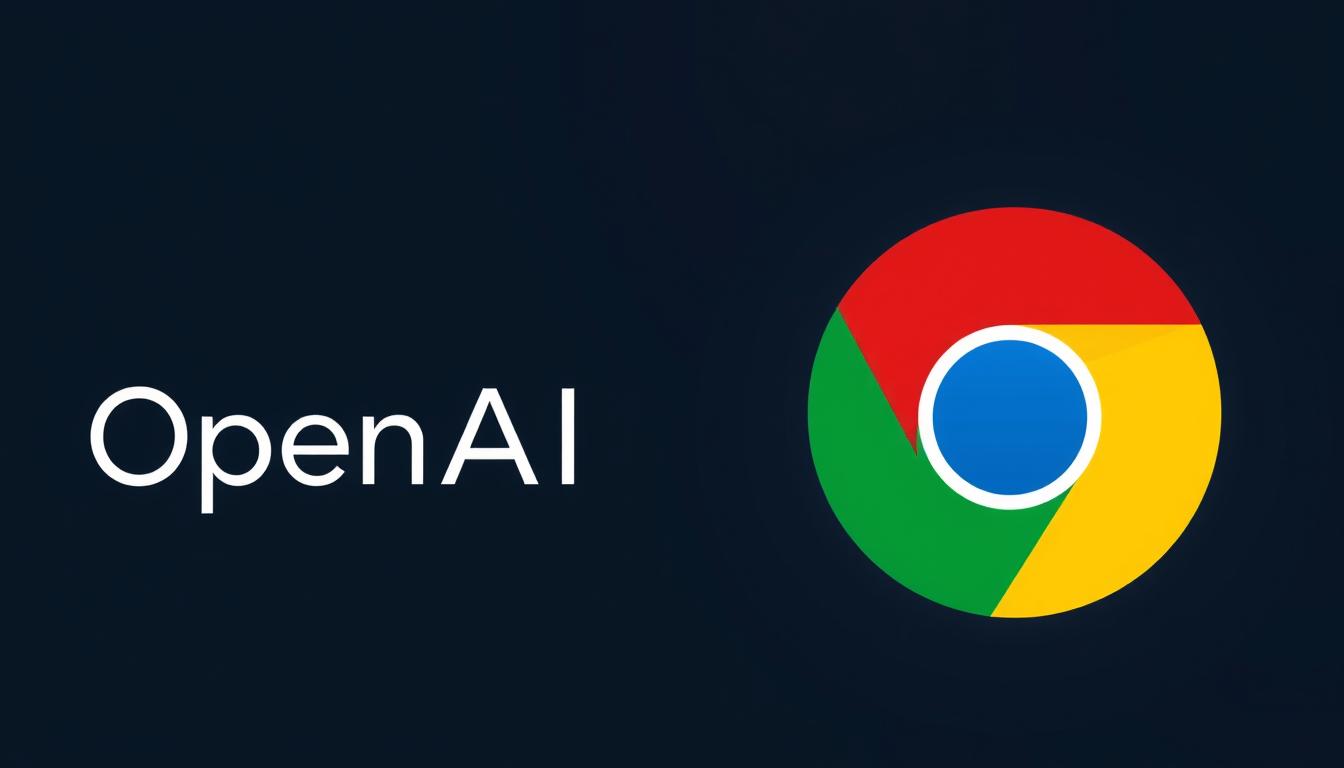
Comments are closed